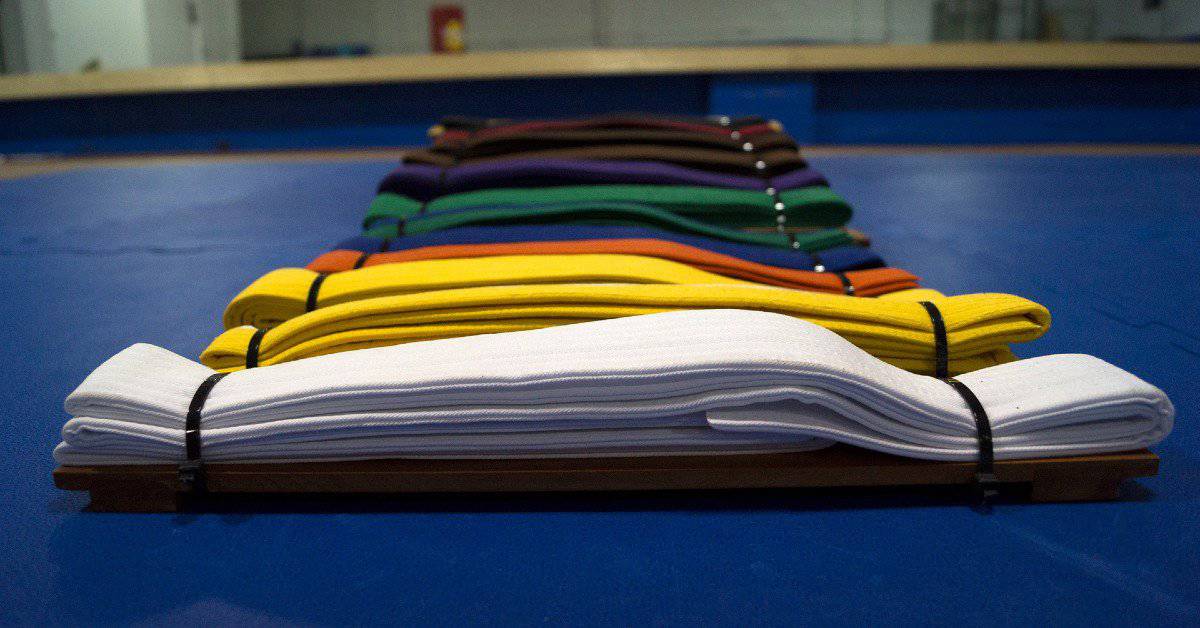Martial arts belts are used to represent the ranking and progress of students in martial art.
It was a system to reward the best students and show their progress until they reached the highest rank after attaining a certain level of expertise.
Martial arts belts consist of 9 belt colors: white belt, yellow belt, orange belt, green belt, blue belt, purple belt, black belt, and red belt. The number and order of martial art belts can vary depending on specific martial arts.
In this article, I will tell you everything about martial arts belts’ colors, the highest-ranked belts (and is there a belt above black?), the history of belts in martial arts, and much more about martial arts belts.
Which Martial Arts Use Belt Ranking System?
The most popular martial arts that use the belt ranking system are karate, taekwondo, judo, Aikido, BJJ, capoeira, Krav Maga, savate, Kung Fu, and Wing Chun. Sometimes, martial art instructors use the belt system to award their students in other martial arts, like Muay Thai or Western Kickboxing, but historically, the belt system is not used in those arts.
Martial Arts Belts Colors in Order
If you are a martial art student, your rank will be denoted by the color of the belt tied around your waist with your uniform.
In almost all types of martial arts, the first belt is the white belt, and you will have to progress until you reach the peak, i.e., the highest stage, which has been described as the black belt.
However, getting to reach the black belt takes dedication and several years. Before you get to that stage, you will move from one color to another, and each belt color has its special meaning and signifies a level of experience and progress.
The different colors associated with martial art include white, yellow, orange, green, blue, purple, brown, and black (and red belt) in the order of ranks.
White Belt
This is the belt usually worn by beginners, and it symbolizes the birth of a seed or a fresh beginning. This belt is given to those people that are just starting their skills in martial art. Students begin their martial arts voyage or a “new life” with a white belt.
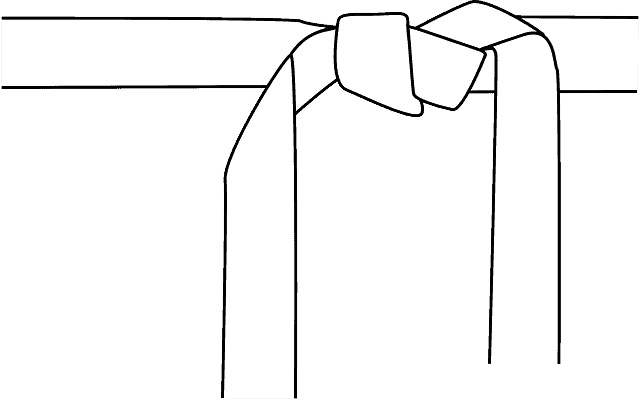
Yellow Belt
This is the second level in martial art; the color represents the idea that the sun is warming the seed. The yellow belt means you’ve learned the basics, and one can call you “an advanced beginner.”
Orange Belt
This is the third stage of martial art skills, representing the seed getting warmed and strengthened to prepare them for new growth. It usually denotes a student’s body and mind starting to develop and maintain.
For Karate students, this means the final stage of beginner, and it shows that you are ready to transition to the intermediate level.
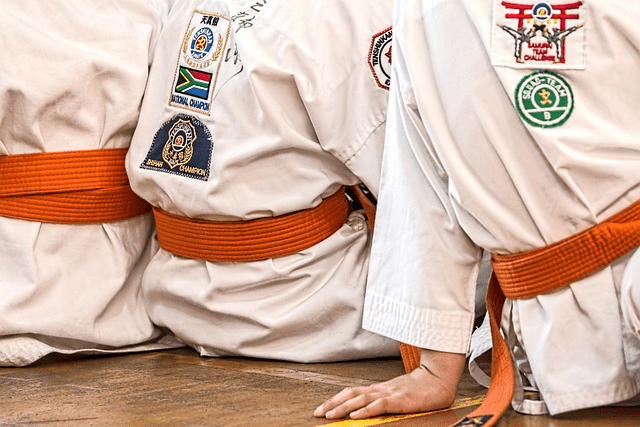
Green Belt
This is the fourth stage of martial arts skills, and it usually signifies that the student is beginning to hone their skills and learning how to refine and strengthen his martial arts techniques. Green belt mostly means you’ve reached an intermediate practitioner status.
Blue Belt
The blue belt represents the process of possessing a certain level of confidence where the student becomes more muscular and continues to get the needed knowledge to ensure the correct path ng followed.
The advanced students are believed to be pushing their branches toward the sky (blue), and the fruit is ready to grow. It is a part of the life cycle, where the blue belt means “that you are in the middle of your journey.”
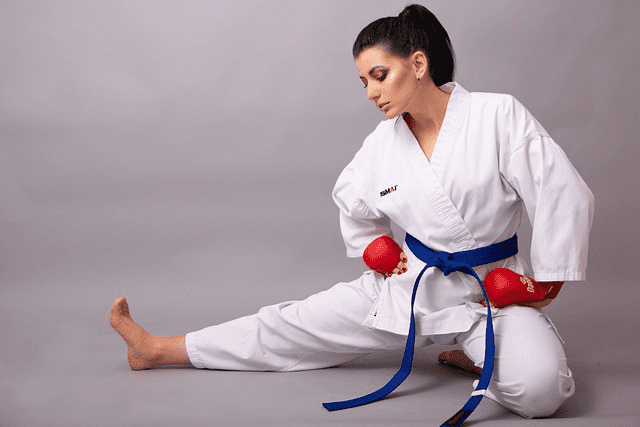
Purple Belt
This is the stage where students get ready to transition to an advanced level in martial art, a location where a student has to understand what he requires to obtain the highest rank of black belt that is not so far away.
Brown Belt
The brown belt is when the student starts to appreciate all the hard work and dedication he has put into attaining the skills since he started with a white belt. This will also help him push to the black belt stage.
The brown belt symbolizes the ground, the Earth. The student is ready for a new cycle once they reach the brown belt level.
Black Belt
This is the most prestigious stage of martial art belts, and it is time a student must have complete control of their abilities and knowledge and possess the power to teach them to new students.
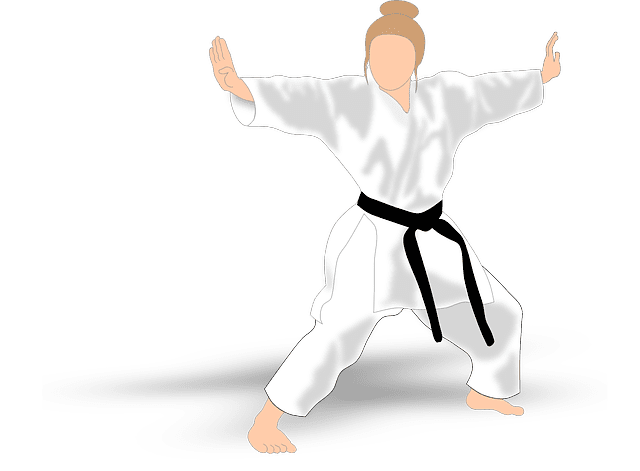
Red Belt
The red belt could sometimes denote a pre-black stage where the student becomes powerful in abilities and must respect and recognize this power. A red belt could sometimes mean the grandmaster, i.e., the scene after some levels of black belt.
Martial Arts Belts History
Martial Arts Belts History
Most Japanese, Chinese, and Korean Martial Arts use the kyū/dan system and colored belts for ranking grades. But, for example, Taekwondo and Karate belt colors are different. We will explain everything in the paragraph below.
According to the Japanese Martial Arts, dan ranks are equivalent to and are represented by black belts. Various dan ranks are style specific. [1]
Usually, dan ranks are from 1st to 5th and 1st to 10th, represented by various degrees in black belts.
Ranks below the dan ranks are called kyū ranks. These are basic ranks denoted by various colored belts.
Once a person has achieved the dan rank, he is no longer considered a beginner and not necessarily an expert. A dan rank signifies that an individual can walk and begin the journey.
The many dan ranks in Japanese Martial Arts are pronounced as such:
- 1st Dan – Shodan;
- 2nd Dan – Nidan;
- 3rd Dan – Sandan;
- 4th Dan – Yondan;
- 5th Dan – Godan;
- 6th Dan – Rokudan;
- 7th Dan – Shichidan;
- 8th Dan – Hachidan;
- 9th Dan – Kudan;
- 10th Dan – Jūdan.
Usually, the 1st to 8th dan is represented by a black belt, while a red belt represents the 9th and 10th dan.
Meanwhile, Chinese Martial Arts has a graduation system based on nine Duan levels – split into three, for each beginner, intermediate, and advanced level.
The beginner level or basic duans are awarded to students with a few years of experience.
The intermediate-level or middle-level duans are awarded to students/coaches with 5-10 years of coaching experience.
The advanced level or the final three duans are for experienced masters with established reputations in Wushu. An advanced-level individual is allowed to call himself a “Grand Master.”
Instead of belt systems, Chinese Martial Arts has adopted three animals – Ying (Eagle), Hu (Tiger), and Long (Dragon). These animals and three colors – bronze, silver, and gold- decide an individual’s level.
In Korean Martial Arts, the grading system is based on dan ranks. A person with a dan rank (equivalent to a 1st-degree black belt) is called a “yudanja,” and one above the 6th dan rank (equal to a 6th-degree black belt) is called a “godanja.”
The dan ranks for most Korean Martial Arts do not go past the ninth, butt in some places, a tenth dan is also offered.
- Il dan or 1st dan – first-degree black belt;
- I dan or 2nd dan – second-degree black belt;
- Sam dan or 3rd dan – third-degree black belt;
- Sa dan or 4th dan – fourth-degree black belt;
- O dan or 5th dan – fifth-degree black belt;
- Yuk dan or 6th dan – sixth-degree black belt;
- Chil dan or 7th dan – seventh-degree black belt;
- Pal dan or 8th dan – eighth-degree black belt;
- Gu dan or 9th dan – ninth-degree black belt;
- Sip dan or 10th dan – tenth-degree black belt.
Other martial art traditions, apart from the East Asian Martial Arts, use their belt ranking system, which is colored from white (beginner) to black (advanced).
How About Mixed Martial Arts?
MMA is the fastest-growing fighting style globally, but no belts exist in mixed martial arts. Every fighter mostly comes from one martial art, where he has some rankings, but you will never hear about a guy with a black belt in MMA.
For example, Georges St-Pierre is a black belt in Shotokan Karate, Demian Maia has a degree in BJJ, and Stephen Thompson is a black belt in American kickboxing. But they are mixed martial artists, not MMA belt owners.
Division champions like Alexander Volkanovski or Jiri Prochazka are not black belts in mixed martial arts; they have a basic fighting style. For example, Jon Jones has a background in Gaidojutsu, a fighting style his coach Mike Winkeljohn invented.
Which Martial Arts Belt Is Highest?
Usually, the black belt is the highest in martial arts. But, in a few skills, including Judo, Brazilian Jiu-Jitsu, and Karate, the red belt is reserved for exemplary masters of the art and is above the black belt.
No universally accepted standard governs how the belt colors of martial art should be, each type of martial art follows its own rules, explanations, and traditions, and there are, at times, variations within the same type.
However, it is generally accepted that the first belt should be white while the highest belt should be black. You will usually move from the white belt to the yellow belt, to the orange belt, to the green belt, to the blue strap, to the purple belt, to the brown belt, and then to the black belt, which is the peak.
Meanwhile, there are levels to black belts, and it takes mastery and time to attain those feats.
How Many Degrees Are Black Belts There?
The black belt in martial arts has a significant meaning and is usually referred to as a level of competence when first attained. Still, as you move higher, you begin to move towards a certain level of mastery.
This ranking system has been labeled to be the Dan ranking system. It has also been researched that there are up to 10 mastery levels (degrees) beyond the first Dan black belt, which may take a lifetime to accomplish.
This means that there are ten different degrees for black belts; However, the color of the straps will remain black, and various inscriptions per level are usually written on them to denote seniority.
Is There a Belt Above Black?
As stated above, the black belt has been generally accepted as the highest-ranked belt, but for some martial arts, some other colors have been placed above the black belt when someone attains a very high grade.
In Judo and Karate, a sixth dan usually wears a red and white belt. Usually, this belt is used for ceremonial occasions, while the regular black belt is still used for training. For the ninth and 10th dan, red belts are awarded by some schools while others grant purple belts.
Martial Arts Red Belt
A red belt is commonly used to differentiate an opponent in a competition, or it is used to denote ranks. Its use usually varies depending on the martial art, but it is often given to grandmasters and other high levels.
However, some parts use a red belt for beginners, while some use it as a pre-black rank. For modern Karate, competitors use blue and red sashes, and it is the rule that these are the two belts worn in this competition.
A red belt is usually designated for the person with the highest rank, i.e., a grandmaster, or for pre-black or perhaps conventionally worn in Karate competitions.
Does Taekwondo Have Belt System for Ranking?
Taekwondo has a ranking system based on belts. ITF Taekwondo ranking system has ten ranks (dans) based on a skill level, from 10th, the white belt, to 1st, the black belt. WT Taekwondo has 11 belt ranks, ranging from 11th dan (white belt) to 1st dan (black belt). You can read more about belt colors in Taekwondo here.
Does Karate Have Belt System for Ranking?
The karate belt system consists of eight different colors. Ranging from the lowest to the highest, karate students can achieve a white belt, yellow belt, orange belt, green belt, blue belt, purple belt, red belt, and brown belt. You can read more about the karate belt system here.
Does Kung Fu Have Belt System for Ranking?
There are ten belt levels in Kung Fu. The first-degree belt rank is white, while the highest achievable is the black belt. You can learn more about belt colors in Kung Fu here.
Does BJJ Have Belt System for Ranking?
There are two different belt ranking systems in BJJ: the Gracie system, founded by Carlos and Hélio Gracie and used by the Gracie family, and the International Brazilian Jiu-Jitsu Federation (IBJJF) system, prescribed by the international governing body of Brazilian Jiu-Jitsu. You can read more about belt levels in BJJ here.
Does Muay Thai Have Belt System for Ranking?
Traditional Muay Thai doesn’t have a colored belt system. On the other hand, some Western Muay Thai schools have belts and ranking systems. You can learn more about the ranking system used in such schools here.
You must understand that to attain the best belt in martial art; it takes dedication, discipline, hard work, persistence, patience, perseverance, and time. Only those who can undergo these processes will attain the highest belts.
How Many Belts Can You Get in Martial Arts?
The number of belts varies from a martial art to martial art. For example, Karate has eight belt colors, while Kung Fu has ten. Each martial artist starts with a white belt, aiming to achieve the highest belt (usually the black belt).
What Belt Was Bruce Lee?
Bruce Lee was one of the most influential martial artists of all time. Contrary to popular belief, he did not have any belts.
